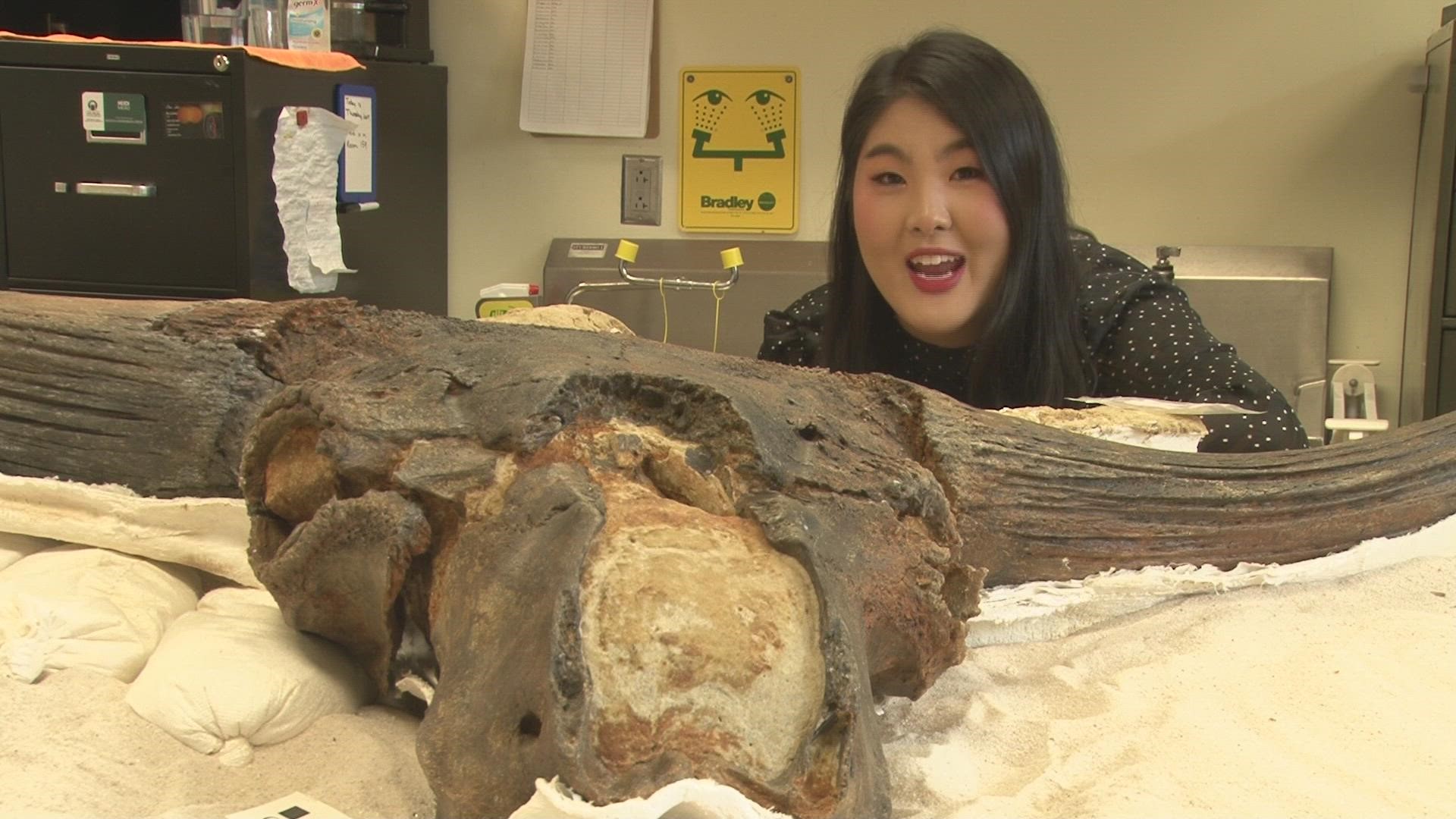MILLEDGEVILLE, Ga. — When you think of the state of Georgia, prehistoric fossils don't really come to mind.
However, experts at Georgia College say creatures like mammoths used to roam our backyards long ago.
Al Mead, biology professor and paleontologist at Georgia College, says that their institution has the largest collection of mammoth and great bison bones in all of Georgia.
"13 foot tall elephants, these bison with seven foot horn spans are walking around Georgia. Just completely different from today,” he says.
Mead has worked at Georgia College for over 20 years. He says Clark Quarry– a campus 3 hours south in Brunswick, Georgia– was discovered in 2001. It's where most of these giants roamed.
"Two boys were trying to catch frogs and salamanders to feed to their turtle and they pulled a bone out of the canal,” he says. “[University of] Georgia got a hold of me. I immediately recognized that they had bison, they had mammoth and we started digging," he said.
Mead says their collection has over 1,000 specimens cataloged and they have 3,000 - 4,000 more waiting to be worked on.
He says even after 2 decades, they're still discovering new fossils, like a partial skull of a giant bison this past summer with students from the college of Coastal Georgia.
"When she got it nice and excavated. I told her-- I said, 'Alright now, you're the first person to see that bone,'. She sat there for a minute and said, ‘Really?’. She just absolutely loved it,” Mead explains.
He says watching students' joy of discovery is half of what makes his paleontological work worth it.
"The research that we do allows us to involve lots of students and so they get to experience that passion, and if we can ignite that passion, then they're the leaders of the next generation,” he says.
Todd Bennett is Mead’s research assistant. He says he couldn’t imagine doing anything else.
"It mixes field work with academics and I love it,” says Todd. “You really have to look at and understand the past to really understand where we're at now and where we're going in the future, so it's definitely important.”
Mead says the other reason behind his motivation to work is because as technology evolves, so does paleontology. He says it can tell us a lot about our past and our future.
"Certain animals are going to tell us that it was a certain temperature-- that the vegetation was this particular way. As climates changes-- you know, we're experiencing some rather drastic climate change right now– we're able to say, well Georgia used to look like this and will GA look like that again? We need to understand earth's past so that we're comfortable thinking about the possibility of what earth's future is," he said.
Mead says there's still a lot to discover, and he invites anyone to come visit their Natural Science Museum at Herty Hall at Georgia College to learn more about Georgia's past.
WHAT OTHER PEOPLE ARE READING:

